Looking for Pink Panther (Callisia repens) care tips and tricks? You’re in the right spot. I’m going to walk you through everything you need to know to have a healthy, happy Pink Panther (Callisia repens) plant.
You wouldn’t be wrong if you think this plant is named after the popular cartoon character, the Pink Panther. It is named for its distinctively bright pink leaves!
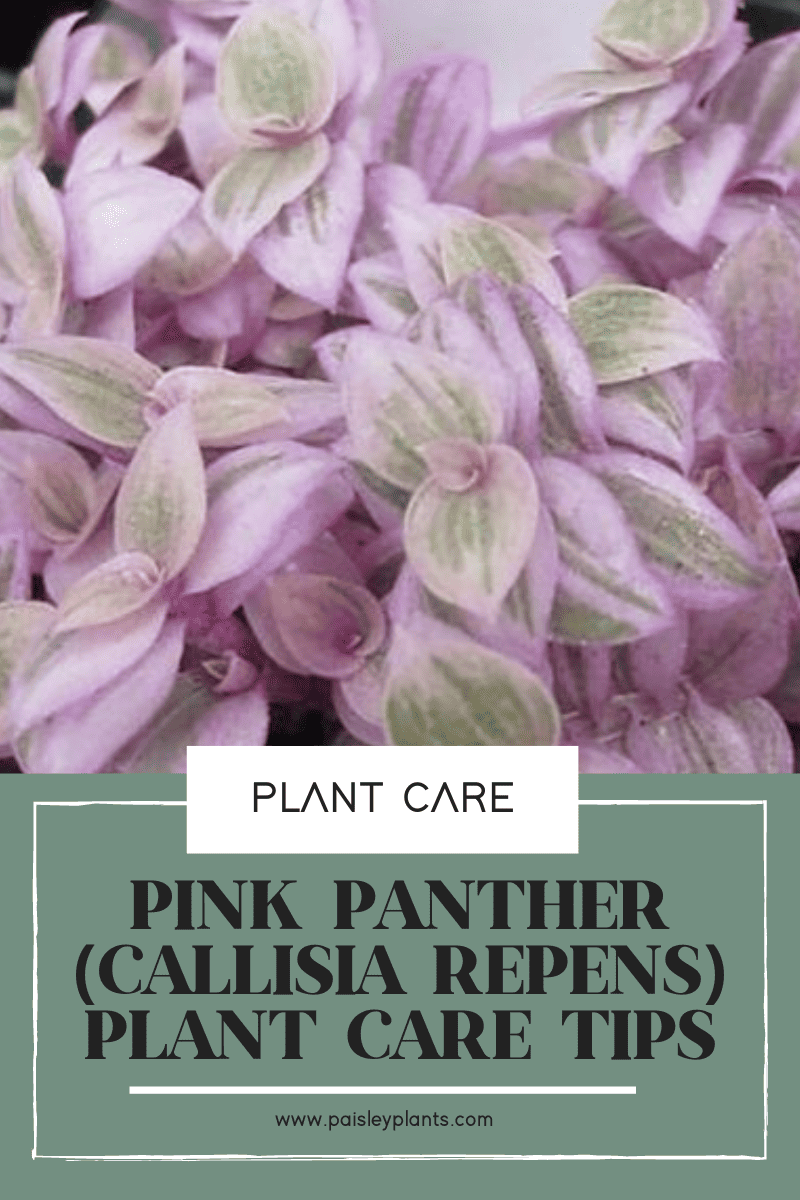
Table of Contents
Pink Panther (Callisia repens) Background and History
Until recently, it was considered to be a relatively new houseplant. For that reason, not much is known about its long term care, but it is known that it is a fast growing, low maintenance plant that does well in bright, indirect light.
It is native to tropical regions of Central and South America and can grow up to three feet tall indoors. They have elongated flowers with dark purple and pink shaded leaves. The leaves are covered in light pink veins, thus giving it the name “Pink Panther.”
The veins on the leaves are where the water is stored and they also help reflect light and keep the plant from getting overheated. The plant does produce small, elongated pink flowers in the spring and summer seasons.
The flowers of this tropical plant have a slightly sweet tinge, but aren’t very fragrant for the most part unless you get really close to them. The smell does attract bees and butterflies, however, for pollination.
There are several other common names for the Tradescantia ‘Pink Panther. These include the “Pink Lady Plants,” “Creeping Inch Plant,” “Pink Lady Turtle Vine,” and “Sweet Bubbles.” They also include “Bianca,” “Tangle,” “Tango,” and “Tricolor.”
They belong to the Tradescantia family which is one of the most colorful plant families in the world! The scientific name for this plant is Tradescantia Callisia repens.
Toxicity
The Pink Panther is considered mildly toxic to both humans and animals. For this reason, you should be sure to keep them out of reach of small children and pets. They can cause skin irritation if the leaves come into contact with skin. They are also toxic if ingested.
Pink Panther Easy Care Tips
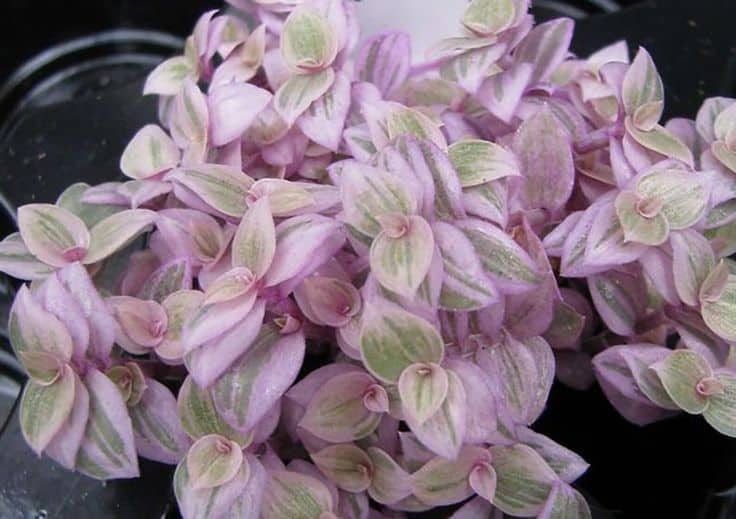
Photo via Hirt’s Garden
Watering Requirements
Be sure to water your Callisia Pink Panther on a regular schedule. Allow the top inch of soil to dry out between waterings. You can use room temperature tap water, as long as you allow it to sit for 24 hours prior to using it. This will allow the chlorine and other chemicals to dissipate.
You won’t need to water the plant as often during the fall and winter months, which are considered to be the dormant period. When the plant starts to grow more again in the spring and summer months, you can begin watering it again on a more regular schedule.
Light Requirements
In order to maintain the bright pink color of your Pink Panther, it needs plenty of light. You will want to keep it in bright, indirect sunlight. It can tolerate this kind of light in the morning or afternoon, but be careful not to expose it to the harsh midday sunlight which could potentially scorch its leaves.
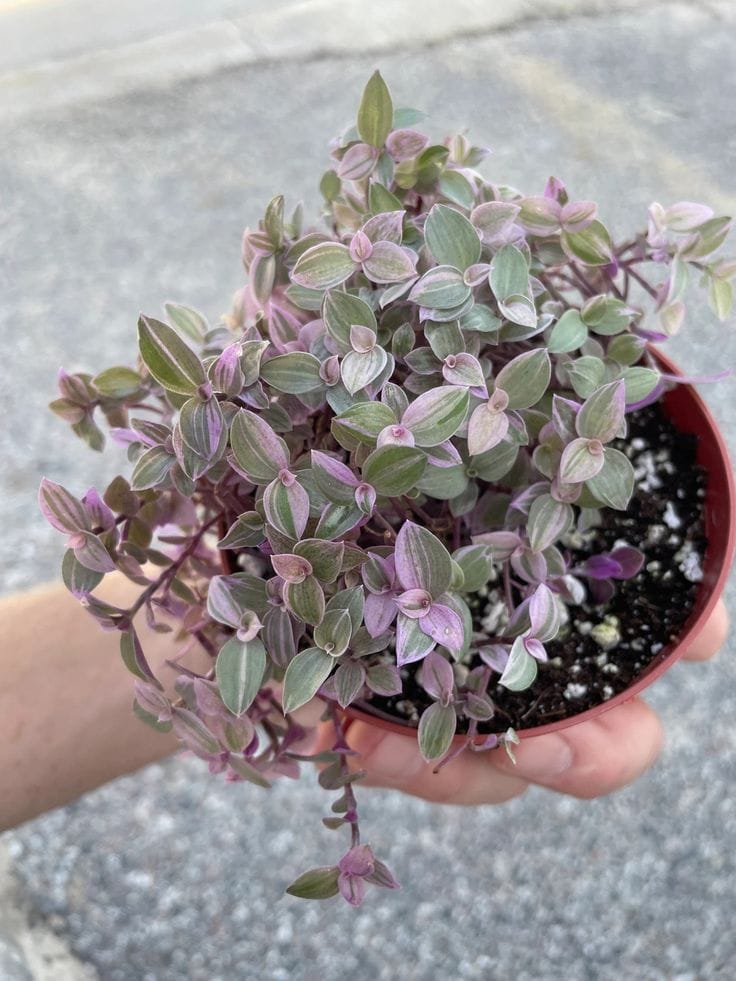
Image via the Green Escape
Soil Requirements
A light soil mix such as one with peat moss, perlite, and vermiculite is a great choice for your Pink Panther. You can mix it yourself or buy it at your garden center.
Use a well-draining soil that doesn’t retain water. Be sure your plant doesn’t sit in water. Soggy soil can result in root rot. Always use a pot with drainage holes so excess water can get out.You can also add a handful of perlite to your regular potting soil to lighten it up a bit.
Fertilizing Requirements
Because your Pink Panther is a fast growing plant, you probably won’t need to fertilize it much. Remember that plants get their energy from sunlight, not fertilizer!
Most of the soil you put your plants in also have the necessary ingredients and nutrients needed for your plant. This is something else to keep in mind.
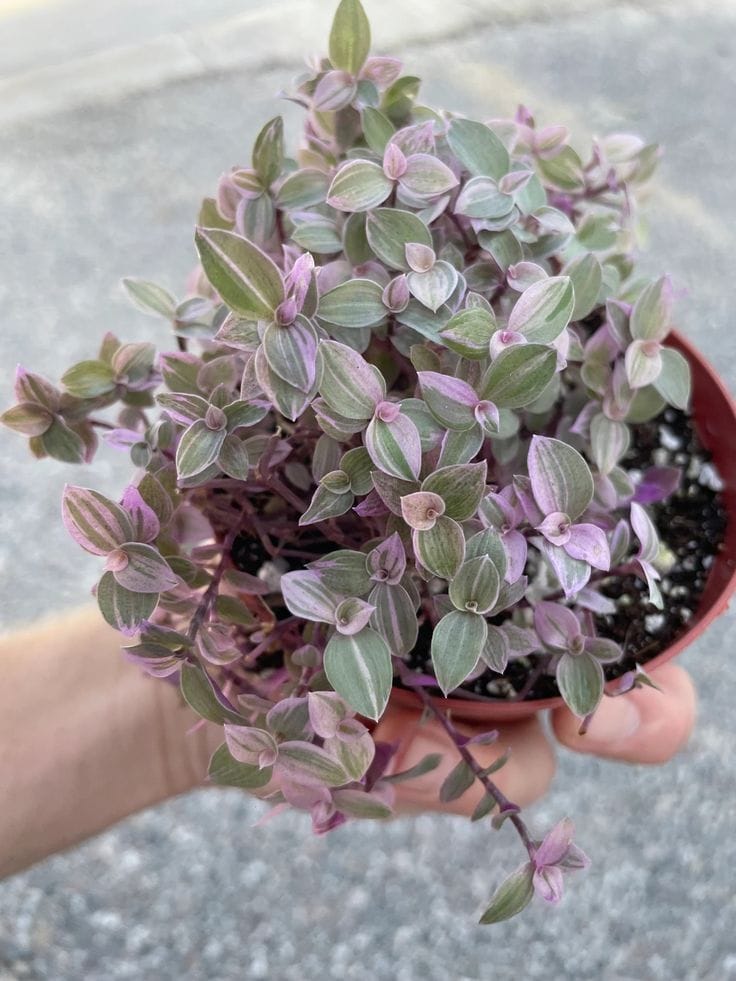
Image via the Green Escape
Temperature and Humidity Requirements
The most ideal temperature for your Pink Panther is between 64 and 72 degrees F. Your plant can tolerate temperatures down to around 50 degrees F, but anything hovering around freezing can damage the leaves and cause them to turn brown and lose their vibrant pink color.
You’ll be glad to know that your Pink Panther will do well in normal household humidity conditions and doesn’t necessarily need high humidity levels. It won’t hurt, however, to occasionally mist your plant to give it a humidity boost to the leaves.
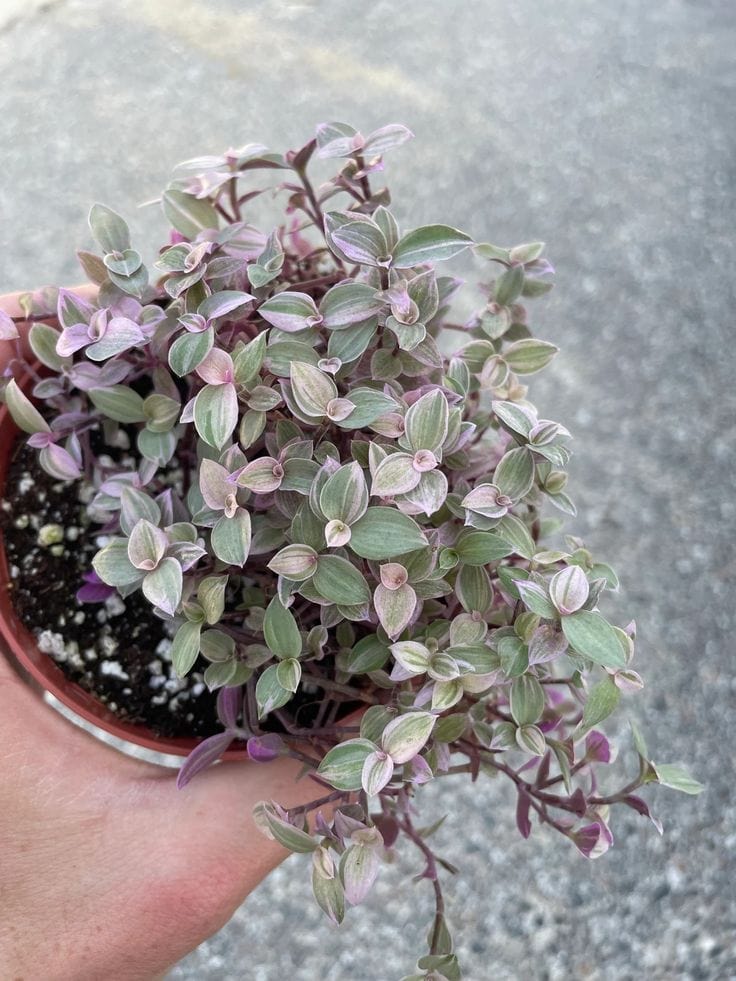
Image via the Green Escape
Pests and Diseases
Some of the most common pests for the Pink Panther plant are aphids, mealybugs, and spider mites. These are most likely found on unhealthy plants, so be sure to keep the moisture and light levels correct on your plant to ensure they keep healthy.
If you do discover any of the above pests, the first step is to isolate your plant from others. You can use neem oil or insecticidal soap to clean the pests from your plant. Follow the directions on the container to ensure proper use.
Fungal disease and root rot are other issues for Pink Panther. Regular inspection of your plant for early detection of these problems will be a great help if you spot them in their early stages.
Maintaining a regular watering schedule will also go a long way to ensuring your plant doesn’t get root rot or fungal diseases. Prevention is one of the best and easiest ways to keep your plant healthy!
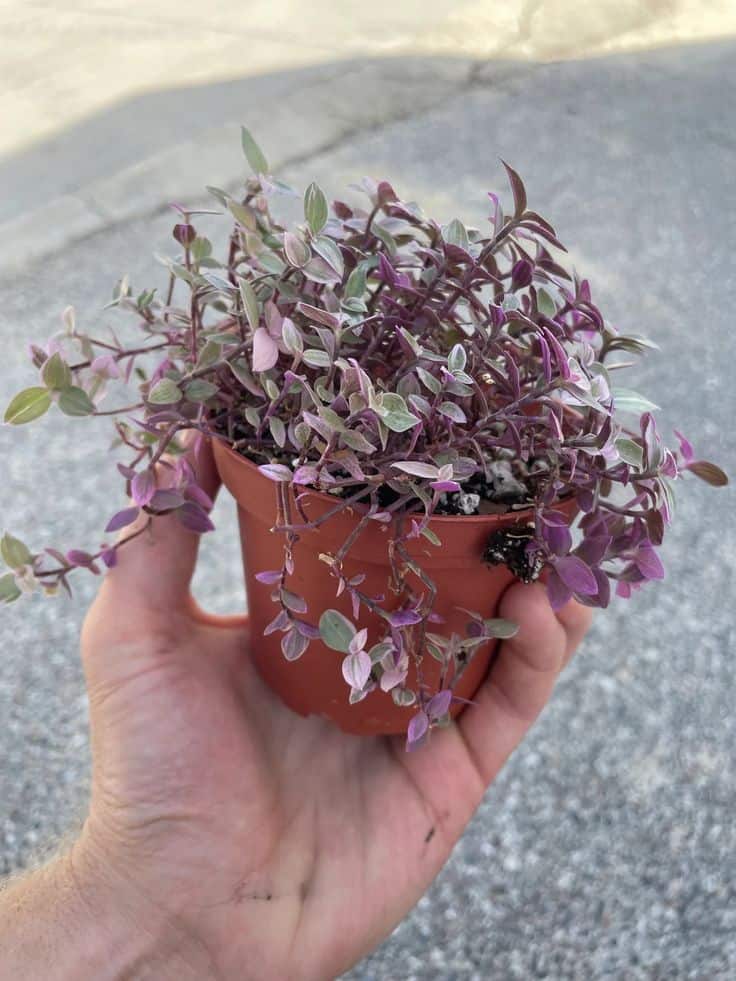
Image via the Green Escape
Pruning and Repotting
Regular pruning of your Pink Panther will help it to grow wider and fuller. If you cut the stems back periodically, they will help the plant to bush out and keep healthy. It’s a good idea to do this during the growing season but can be done at any time if it’s needed.
When you do prune your Pink Panther, be sure to trim it back at one of the natural joints on the stem. Keep any dead, damaged or overgrown leaves trimmed off your plant. This will also encourage new growth.
Because your Pink Panther will most likely double in size each year, it is recommended that you repot it once a year. You will know when it is time if the foliage becomes too large and hangs way over the nursery pot. You will want to use a pot that is at least one to two inches larger than the current pot when you do repot it.
Common Problems
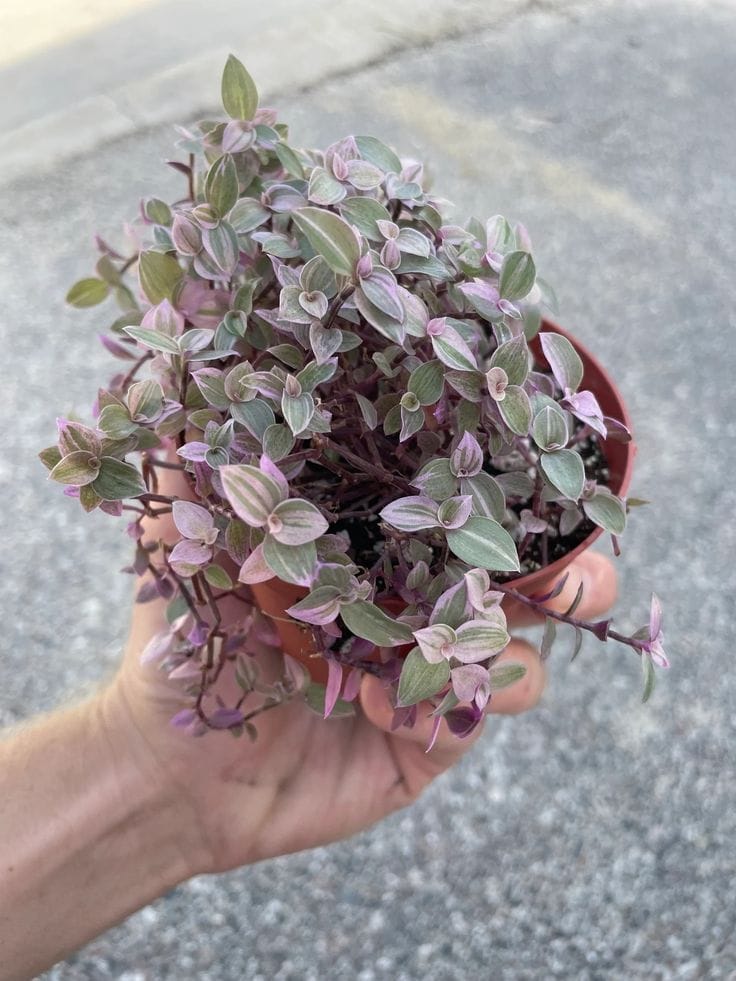
Image via the Green Escape
Leggy Plants
If your plant becomes too leggy, it is easy enough to trim back the longer stems. This can be done by trimming them at one of the natural joints on the stem. These trimmed stems can be propagated in water to start new plants.
Brown Leaves
This can be a result of overwatering your plant. When you overwater, it causes the roots to lose the ability to absorb the necessary oxygen for the plant to grow. Be sure you keep your watering on a regular schedule and don’t let your plant sit in wet soil.
Lack of Variegation
The main reason your Pink Panther will lose its variegation is not enough light. This is easily solved if you maintain enough bright light exposure for your plant. Keep your plant at least three feet from the light source and be sure that it is not exposed to harsh afternoon sunlight which can burn its leaves.
FAQs
Yes, they are drought tolerant and don’t require much, if any, fertilizer. They are fast growing and store water in their leaf veins.
Place your plant at least three feet from the light source. It will require at least one good hour per day of bright, indirect sunlight to maintain their color. Several hours of sunlight per day will keep your plant healthy, but one hour will help keep the beautiful color on the leaves.
Yes! The Pink Panther is an ideal plant to grow in a hanging basket or planter. Its luscious foliage will hang nicely and drape over the edge of its planter and give a beautiful look to any environment with its pretty leaves.
In Conclusion
Adding color to any room whether it be through textiles, art or plants is a great idea. Plants are an easy way to add color and usually not too expensive either. The Pink Panther is a great plant to add to your room if you are looking to add some new color and interest.
If you’re in the market for a new plant, try a Pink Panther. She will definitely give you a rosy outlook on life once she is present in your home or office! As always, keep on growing!
